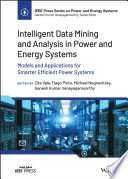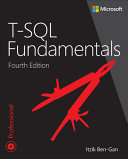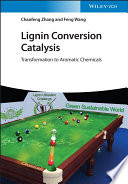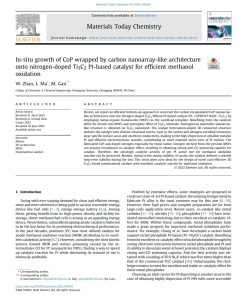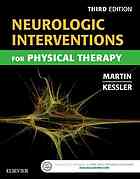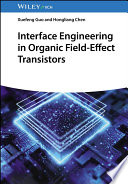(EBook PDF) GaN transistors for efficient power conversion 3rd Edition by Alex Lidow, Michael de Rooij, Johan Strydom 1119594421 9781119594420 full chapters
$50.00 Original price was: $50.00.$25.00Current price is: $25.00.
GaN transistors for efficient power conversion 3rd Edition by Alex Lidow, Michael de Rooij, Johan Strydom – Ebook PDF Instant Download/DeliveryISBN: 1119594421, 9781119594420
Full download GaN transistors for efficient power conversion 3rd Edition after payment

Product details:
ISBN-10 : 1119594421
ISBN-13 : 9781119594420
Author: Alex Lidow, Michael de Rooij, Johan Strydom
Primary: Power conversion systems designers and circuit design engineers needing to learn quickly about the new devices, R&D in the semiconductor industry, device end-users, practicing engineers and researchers specific to GaN power devices.
Secondary: Senior undergraduate and graduate students in electrical engineering.
GaN transistors for efficient power conversion 3rd Table of contents:
1 GaN Technology Overview
1.1 Silicon Power Metal Oxide Silicon Field Effect Transistors 1976–2010
1.2 The Gallium Nitride Journey Begins
1.3 GaN and SiC Compared with Silicon
1.4 The Basic GaN Transistor Structure
1.5 Building a GaN Transistor
1.6 GaN Integrated Circuits
1.7 Summary
References
2 GaN Transistor Electrical Characteristics
2.1 Introduction
2.2 Device Ratings
2.3 On‐Resistance (RDS(on))
2.4 Threshold Voltage
2.5 Capacitance and Charge
2.6 Reverse Conduction
2.7 Summary
References
3 Driving GaN Transistors
3.1 Introduction
3.2 Gate Drive Voltage
3.3 Gate Drive Resistance
3.4 Capacitive Current‐Mode Gate Drive Circuits for Gate Injection Transistors
3.5 dv/dt Considerations
3.6 di/dt Considerations
3.7 Bootstrapping and Floating Supplies
3.8 Transient Immunity
3.9 High‐Frequency Considerations
3.10 Gate Drivers for Enhancement‐Mode GaN Transistors
3.11 Cascode, Direct‐Drive, and Higher‐Voltage Configurations
3.12 Summary
References
4 Layout Considerations for GaN Transistor Circuits
4.1 Introduction
4.2 Minimizing Parasitic Inductance
4.3 Conventional Power‐Loop Designs
4.4 Optimizing the Power Loop
4.5 Paralleling GaN Transistors
4.6 Summary
References
5 Modeling and Measurement of GaN Transistors
5.1 Introduction
5.2 Electrical Modeling
5.3 Measuring GaN Transistor Performance
5.4 Summary
References
6 Thermal Management
6.1 Introduction
6.2 Thermal Equivalent Circuits
6.3 Improving Thermal Performance with a Heatsink
6.4 System‐Level Thermal Analysis
6.5 Summary
References
7 Hard‐Switching Topologies
7.1 Introduction
7.2 Hard‐Switching Loss Analysis
7.3 Impact of Parasitic Inductance on Hard‐Switching Losses
7.4 Frequency Impact on Magnetics
7.5 Buck Converter Example
7.6 Summary
References
8 Resonant and Soft‐Switching Converters
8.1 Introduction
8.2 Resonant and Soft‐Switching Techniques
8.3 Key Device Parameters for Resonant and Soft‐Switching Applications
8.4 High‐Frequency Resonant Bus Converter Example
8.5 Summary
References
9 RF Performance
9.1 Introduction
9.2 Differences Between RF and Switching Transistors
9.3 RF Basics
9.4 RF Transistor Metrics
9.5 Amplifier Design Using Small‐Signal s‐Parameters
9.6 Amplifier Design Example
9.7 Summary
References
10 DC–DC Power Conversion
10.1 Introduction
10.2 Non‐Isolated DC–DC Converters
10.3 Transformer‐Based DC–DC Converters
10.4 Summary
References
11 Multilevel Converters
11.1 Introduction
11.2 Benefits of Multilevel Converters
11.3 Gate Driver Implementation
11.4 Bootstrap Power Supply Solutions for GaN Transistors
11.5 Multilevel Converters for PFC Applications
11.6 Experimental Examples
11.7 Summary
References
12 Class D Audio Amplifiers
12.1 Introduction
12.2 GaN Transistor Class D Audio Amplifier Example
12.3 Summary
References
13 Lidar
13.1 Introduction to Light Detection and Ranging (Lidar)
13.2 Pulsed Laser Driver Overview
13.3 Basic Design Process
13.4 Hardware Driver Design
13.5 Experimental Results
13.6 Other Considerations
13.7 Summary
References
14 Envelope Tracking
14.1 Introduction
14.2 High‐Frequency GaN Transistors
14.3 Topologies for Envelope Tracking Supplies
14.4 Gate Driver Design
14.5 Design Example: Tracking a 20 MHz LTE Envelope Signal
14.6 Summary
References
15 Highly Resonant Wireless Power
15.1 Introduction
15.2 Overview of a Wireless Power System
15.3 Amplifiers for Wireless Power Systems
15.4 Transistors Suitable for Wireless Power Amplifiers
15.5 Experimental Validation of GaN Transistor‐Based Wireless Power Amplifiers
15.6 Summary
References
16 GaN Transistors for Space Applications
16.1 Introduction
16.2 Failure Mechanisms
16.3 Standards for Radiation Exposure and Tolerance
16.4 Gamma Radiation Tolerance
16.5 SEE Testing
16.6 Neutron Radiation (Displacement Damage)
16.7 Performance Comparison Between GaN Transistors and Rad‐Hard Si MOSFETs
16.8 Summary
References
17 Replacing Silicon Power MOSFETs
17.1 Introduction: What Controls the Rate of Adoption?
17.2 New Capabilities Enabled by GaN Transistors
17.3 GaN Transistors Are Easy to Use
17.4 Cost Versus Time
17.5 GaN Transistors Are Reliable
17.6 Future Direction of GaN Transistors
17.7 Summary
People also search for GaN transistors for efficient power conversion 3rd
how much power does a transistor use
using a transistor to reduce voltage
how much power does koeberg generate
how to convert ma to voltage
gan power transistors
Tags:
GaN transistors,efficient power,conversion,Alex Lidow,Michael de Rooij,Johan Strydom
You may also like…
Technique - Energy: Renewable Energy
Computers - Databases
Medicine - Anatomy and physiology
Education Studies & Teaching - Studying & Test Preparation
Engineering - Chemical Engineering
Engineering - Bioengineering
Computers - Applications & Software
Microsoft Excel Power Pivot & Power Query For Dummies, 2nd Edition Michael Alexander




